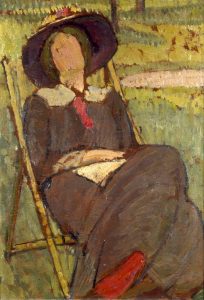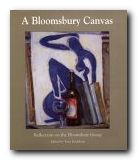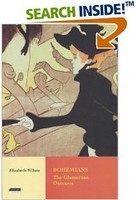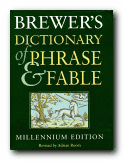critical and illustrated biography – plus discography
As the handsome (and much-married) leader of a series of big bands and small groups in the 1930s and 1940s, clarinetist Artie Shaw achieved measures of fame and fortune that temporarily eclipsed those of his great rival, Benny Goodman. Shaw’s five top single recordings had sold over 65 million copies by 1965; by 1990 his total sales exceeded 100 million records. John White’s critical biographical study starts with an outline of Swing as a phenomenon of the 1930s and 1940s, then traces Shaw’s rise through countless small bands to fame as a leader in his own right. It takes in the jobbing years of the 1930s and the rise to stardom in the 1940s. And then at the height of his fame, suddenly feeling uncomfortable in the modernist phase of the 1950s, Shaw retired to Spain.
 After five years he returned to the USA, and made a series of come-backs, then started writing fiction. It’s lucidly written account, fully annotated and referenced, and I particularly liked the fact that White puts the life of the musician into a socio-economic context – so we see what shaped the world of a professional musician. It’s a rich antidote to the romantic approach to jazz music criticism, which tends to be based on anecdotes and uncritical enthusiasm.
After five years he returned to the USA, and made a series of come-backs, then started writing fiction. It’s lucidly written account, fully annotated and referenced, and I particularly liked the fact that White puts the life of the musician into a socio-economic context – so we see what shaped the world of a professional musician. It’s a rich antidote to the romantic approach to jazz music criticism, which tends to be based on anecdotes and uncritical enthusiasm.
The narrative is punctuated by well-documented quotations from Shaw himself and other musicians. These often reinforce the precarious life of the professional jazz musician:
‘A cop in Boston arrested our Negro driver and tossed him into the can … We left our driver in jail, the truck in the police yard, and went on to our next stand by bus.’
What emerges is portrait of a complex, thoughtful man. He was obviously intellectually ambitious; he frequently dropped out of the music business altogether to pursue other interests; and he did finally achieve a moderate success as a writer. His autobiographical The Trouble with Cinderella is worth reading despite its often pretentious style.
Shaw was good on the race issue (first white band to have a black singer – Billie Holiday) not so good on the political issue (compromising with the Committee of Un-American Activities) and his personal life – well, let’s leave that to his eight ex-wives. These included women as glamorous as Lana Turner and Ava Gardner, despite the fact that he suffered from bad breath.
After the life, the book ends with two essays – an appreciation of his style and a study of his recordings. All of this made me want to hear more , and sure enough I did, when I put on a Mel Torme recording I bought recently. There, rising between choruses from The Velvet Fog, were fluid arpeggios from the master himself. He had technique, he had taste – and amazingly enough, he survived to the age of 95. In the world of jazz, that’s quite an achievement.
© Roy Johnson 2004
John White, Artie Shaw: his life and music, London: Continuum, 2004, pp.223, ISBN: 0826469159
More on music
More on biography
More on digital media

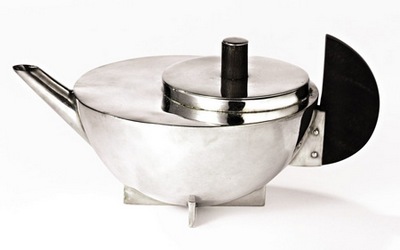
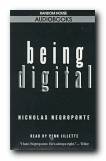
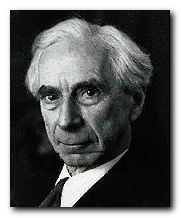 Bertrand Russell (1872-1970) was an unusual mixture of a popular and an academic philosopher. He was the inventor of The Theory of Descriptions. Like many philosophers he made his major contributions whilst quite young with The Principles of Mathematics (1903) and he followed this later with
Bertrand Russell (1872-1970) was an unusual mixture of a popular and an academic philosopher. He was the inventor of The Theory of Descriptions. Like many philosophers he made his major contributions whilst quite young with The Principles of Mathematics (1903) and he followed this later with 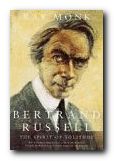
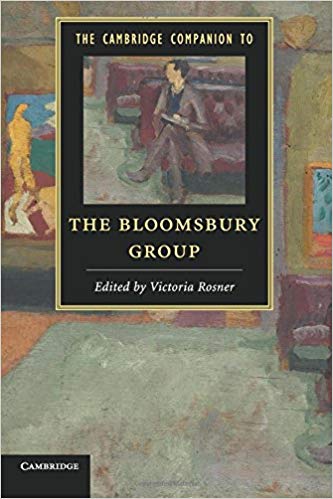
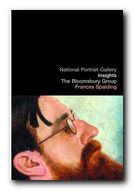
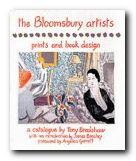
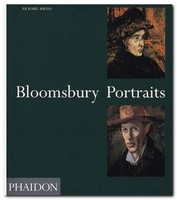 Bloomsbury Portraits is an updated and redesigned edition of Richard Shone’s study of the painters of the Bloomsbury group.
Bloomsbury Portraits is an updated and redesigned edition of Richard Shone’s study of the painters of the Bloomsbury group. 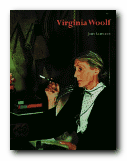 Virginia Woolf is a readable and well illustrated biography by John Lehmann, who at one point worked as her assistant at the
Virginia Woolf is a readable and well illustrated biography by John Lehmann, who at one point worked as her assistant at the 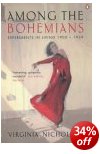 Among the Bohemians: Experiments in Living 1900—1930 was written by Virginia Nicholson, Quentin Bell’s daughter and grand-daughter of Vanessa Bell, who was Virginia Woolf’s sister. Bloomsbury lies at the heart of the book in its portraits of Ralph Partridge, Virginia Woolf, Duncan Grant,
Among the Bohemians: Experiments in Living 1900—1930 was written by Virginia Nicholson, Quentin Bell’s daughter and grand-daughter of Vanessa Bell, who was Virginia Woolf’s sister. Bloomsbury lies at the heart of the book in its portraits of Ralph Partridge, Virginia Woolf, Duncan Grant, 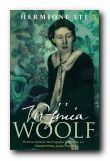 Virginia Woolf, a biography by Hermione Lee is strongly recommended if you would prefer something more advanced and intellectually demanding. It assumes you know the general background to her life and the Bloomsbury group. Lee writes from an academic perspective, and extricates Woolf from clichs about madness and modernism to reveal a vigorous artist whose work is politically probing as well as psychologically delicate. This is one for the serious literary scholar – but it’s nevertheless very readable.
Virginia Woolf, a biography by Hermione Lee is strongly recommended if you would prefer something more advanced and intellectually demanding. It assumes you know the general background to her life and the Bloomsbury group. Lee writes from an academic perspective, and extricates Woolf from clichs about madness and modernism to reveal a vigorous artist whose work is politically probing as well as psychologically delicate. This is one for the serious literary scholar – but it’s nevertheless very readable. Vanessa Bell, Francis Spalding’s excellent biography, sets out a portrait of this complex and talented woman who sacrificed a great deal of her time and efforts to looking after other people. She managed to stay on friendly terms with her lover, her husband, and her ex-lover – and to keep them friendly with each other. At the same time she was an active member of the
Vanessa Bell, Francis Spalding’s excellent biography, sets out a portrait of this complex and talented woman who sacrificed a great deal of her time and efforts to looking after other people. She managed to stay on friendly terms with her lover, her husband, and her ex-lover – and to keep them friendly with each other. At the same time she was an active member of the 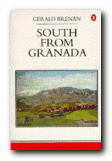 South from Granada is a travel writing classic in which the writer and cultural historian
South from Granada is a travel writing classic in which the writer and cultural historian 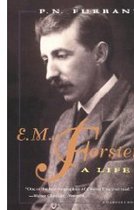 E.M.Forster: A Life is a readable and well illustrated biography by P.N. Furbank. This book has been much praised for the sympathetic understanding Nick Furbank brings to Forster’s life and work, as well as to his relationships with other members of the Bloomsbury Group. He produced his now-classic novels whilst he was quite young, gave up writing fiction, and devoted his later years to political essays and literary criticism. This is also a very scholarly book, with plenty of fascinating details of the English literary world during Forster’s surprisingly long life. Very well written too.
E.M.Forster: A Life is a readable and well illustrated biography by P.N. Furbank. This book has been much praised for the sympathetic understanding Nick Furbank brings to Forster’s life and work, as well as to his relationships with other members of the Bloomsbury Group. He produced his now-classic novels whilst he was quite young, gave up writing fiction, and devoted his later years to political essays and literary criticism. This is also a very scholarly book, with plenty of fascinating details of the English literary world during Forster’s surprisingly long life. Very well written too. A Life of Dora Carrington 1893-1932 Because of her Bohemian lifestyle, her connection with the Bloomsbury group, her bobbed hair, and her outspoken views,
A Life of Dora Carrington 1893-1932 Because of her Bohemian lifestyle, her connection with the Bloomsbury group, her bobbed hair, and her outspoken views, 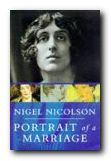 Portrait of a Marriage is a double biography of
Portrait of a Marriage is a double biography of 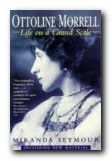 Ottoline Morrell: Life on a Grand Scale This biography reveals Ottoline Morrell, London’s leading literary hostess during the first three decades of the 20th century. Augustus John, the Asquiths, T.S. Eliot,
Ottoline Morrell: Life on a Grand Scale This biography reveals Ottoline Morrell, London’s leading literary hostess during the first three decades of the 20th century. Augustus John, the Asquiths, T.S. Eliot, 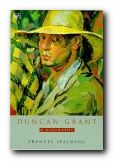 Duncan Grant – a Biography Francis Spalding’s book is the standard account of his life, which stretched from the Victorian age into the modern era. Duncan Grant was one of the best-known names on the British art scene and one of the most charismatic members of the Bloomsbury set. His life spanned great changes in society and art, from Edwardian times to the 1970s. Although he was a homosexual, he lived devotedly and worked throughout his life with fellow artist and former lover
Duncan Grant – a Biography Francis Spalding’s book is the standard account of his life, which stretched from the Victorian age into the modern era. Duncan Grant was one of the best-known names on the British art scene and one of the most charismatic members of the Bloomsbury set. His life spanned great changes in society and art, from Edwardian times to the 1970s. Although he was a homosexual, he lived devotedly and worked throughout his life with fellow artist and former lover 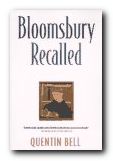 Bloomsbury Recalled Quentin Bell was one of the last surviving members of the Bloomsbury circle. Here he offers a candid portrait gallery of major and peripheral Bloomsbury figures. His father,
Bloomsbury Recalled Quentin Bell was one of the last surviving members of the Bloomsbury circle. Here he offers a candid portrait gallery of major and peripheral Bloomsbury figures. His father,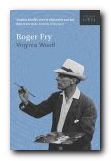 Roger Fry, Virginia Woolf’s authorised biography, traces the development of his aesthetic practice and theories – after first graduating in science from Cambridge. He was the oldest member of the Bloomsbury Group, and influenced much of its ideas concerning fine and decorative arts. In partnership with his one-time lover Vanessa Bell, he was the founder of the Omega workshop, and he became a leading art critic as well as a successful painter in his own right. Don’t expect any spicy personal details: Woolf concentrates on his aesthetic theories and his public life.
Roger Fry, Virginia Woolf’s authorised biography, traces the development of his aesthetic practice and theories – after first graduating in science from Cambridge. He was the oldest member of the Bloomsbury Group, and influenced much of its ideas concerning fine and decorative arts. In partnership with his one-time lover Vanessa Bell, he was the founder of the Omega workshop, and he became a leading art critic as well as a successful painter in his own right. Don’t expect any spicy personal details: Woolf concentrates on his aesthetic theories and his public life.